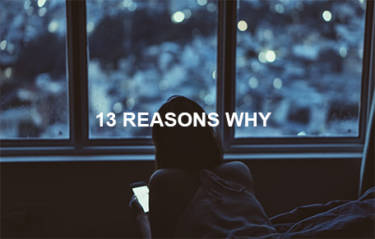13 Reasons Why, is a new Netflix series based on Jay Asher’s popular novel. The show, depicts the life of Hannah Baker, a high schooler who commits suicide and leaves behind a trail of cassette tapes that explain the decision to end her life. A second season was announced this week.
May is mental health month, prompting opportunities to engage in conversations about the challenging topics of mental health and depression. The Mayo Clinic defines depression as “a brain disorder characterized by persistently depressed mood or loss of interest in activities, causing significant impairment in daily life.” Use the following resources to learn more about depression and support engaged dialogue around mental health issues.
- There is something that can be done about depression. There are thirteen reasons given for why the character Hannah did what she did — these reasons can serve as thirteen opportunities to become more informed and aware about what depression is and how to be supportive. Start a conversation about mental health issues with the following Do Now post featuring discussion prompts.
- Learn how to detect signs of depression. In the fictional account, Mr. Porter, the counselor, saw Hannah the day she died. The following lesson plan highlights how to spot signs of depression in your community.
- Depression can be exacerbated by stress. As a sophomore at a new school, trying to find new friends, exploring some of her first relationships, and maintaining good academic standing, the character Hannah Baker had a lot on her plate. Checkout this KQED MindShift post to learn about the different stressors on teens.
- Social Media can be a powerful source of inciting and spreading judgement, leading to even more stress. After watching the show, one might question what would have happened if the controversial picture of Hannah never circulated? In this episode of Above the Noise learn how Social Media, such as Snapchat, Facebook, and Twitter may lead to depressed moods.
- Depression can be hidden. In the fictional portrayal, Hannah did not overtly display depressed moods in her social interactions. In this Youth Radio podcast, a girl shares her internal battle with depression.
- Depression affects people in different ways. Throughout the series, all of the characters experienced their own hardships and responded in different ways. In this Youth Radio podcast, teenagers share their personal experiences with depression and weigh in on how depression is addressed or not in their societies.
- Depression is a mental disability, and a real illness. The brain is one of the most complex structures in the human body. Learn about the brain and how it feels emotion with the following PBS video.
- Depression is not always caused by one thing but can be influenced by many. The character Hannah is depicted as consumed with different social pressures of fitting in and making friends in a new community. Check out this KQED MindShift post to learn how judgement and social stigmas can affect girls development and sense of identity.
- Silence can be harmful. Depression is a widespread issue even if not always openly talked about. Learn about others battles with depression with the following KQED Perspective.
- Learn how to change academic institutions to provide more mental health resources. Use the following KQED MindShift post to think through how to change schools to provide better Mental Health resources. What resources are available for students in your community?
- Become more informed about what bullying actually is. In the series, many of the students knew bullying or “drama” occurred but never spoke up, prompting some to question why were they so mean? — But, is this the right question to ask? Rather, what conditions were influencing their behavior? Learn more about the context of bullying with the following KQED MindShift resource.
- Learn how to provide better opportunities for teachers. Although the high school had a wellness class and a counselor, often this is not the case. Learn about teacher’s access to mental health training with the following KQED MindShift post.
- Start conversations about taboo topics. The character Hannah never told anyone how she was feeling. Use the following KQED MindShift post as a guide for how to foster empathetic conversations around challenging topics.
